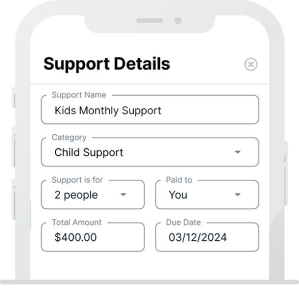Employers face several significant challenges when providing employee benefits. These issues impact the effectiveness, sustainability, and attractiveness of the benefits offered. Addressing these challenges requires innovative solutions that cater to diverse needs, streamline management, and enhance overall employee well-being. SupportPay offers such a solution, helping employers navigate the complexities of employee benefits with ease.
Let’s delve into the common challenges companies face with employee benefits and explore how SupportPay offers an innovative solution to address these issues effectively.
Cost Management
Problem: The rising cost of healthcare and other benefits is a major burden for employers. Balancing the need to provide comprehensive benefits with financial constraints is a constant challenge.
Solution: SupportPay can be offered to employees for an affordable, competitive market price. It improves financial stability, enhances productivity, supports mental health, and significantly reduces absenteeism, offering a high return on investment at a minimal cost.
Customization and Flexibility
Problem: Employees have diverse needs and preferences, making it difficult to design a one-size-fits-all benefits package.
Solution: SupportPay delivers a simple solution that caters to diverse family structures, providing customized support that meets each employee’s specific needs. This flexibility ensures the benefits are relevant and useful to a wide range of employees.
Communication and Education
Problem: Effectively communicating the value and details of benefits to employees is critical. Employees often underutilize benefits because they do not fully understand what is available to them or how to access these benefits.
Solution: SupportPay ensures that employees are aware of the tools and benefits available, simplifying the communication process and making it easier for employees to understand and utilize their benefits.
Engagement and Utilization
Problem: Ensuring employees actively engage with and utilize the benefits provided is a significant challenge. Low engagement can result in employees not receiving the full value of their benefits, undermining the overall effectiveness of the benefits program.
Solution: By addressing daily pain points such as expense tracking, payments, schedules, and communications, SupportPay ensures that the tools provided are directly applicable and beneficial to employees’ lives, increasing engagement and utilization. Additionally, SupportPay offers a money-back guarantee if utilization targets are not met.
Integration with Company Culture
Problem: Aligning benefits with company culture and values can be difficult. Employers need to ensure that the benefits offered support the desired workplace environment and promote the organization’s goals.
Solution: Offering SupportPay demonstrates that the employer values and supports the diverse needs of its workforce, fostering a more inclusive and empathetic company culture that prioritizes employee well-being, work-life balance, and support for family responsibilities.
Technological Integration
Problem: Implementing and managing benefits programs using outdated systems or software can lead to inefficiencies and errors.
Solution: SupportPay does not require integration with existing HR systems or employer resources. It streamlines benefits administration and reduces the workload for HR departments, and can be launched in less than 30 minutes. SupportPay reduces the time and effort required for employees to manage family-related tasks, leading to immediate productivity improvements.
Mental Health and Wellbeing
Problem: Addressing the mental health and overall well-being of employees is increasingly recognized as important, but providing effective support in this area can be challenging.
Solution: By managing and simplifying the time-consuming, conflict-ridden, and stressful tasks of managing complex family dynamics and financial responsibilities, SupportPay helps reduce the stress and mental burden on employees as they juggle daily responsibilities at work and home.
Demographic Changes
Problem: As the workforce becomes more diverse, with varying age groups, family structures, and lifestyles, employers must adapt their benefits to meet these changing demographics.
Solution: SupportPay directly helps a diverse and changing workforce, including single parents, blended families, caregivers, and multi-generational households. It enables organizations to deliver an inclusive, relevant, and needed benefit for all employees, regardless of their family structure or caregiving responsibilities.
Measuring ROI
Problem: Demonstrating the return on investment (ROI) of benefits programs can be difficult. Employers need to justify the costs by showing how benefits contribute to improved employee satisfaction, retention, productivity, and overall business performance.
Solution: SupportPay provides analytics and reporting features that help employers track the usage and impact of the benefit. This data can demonstrate ROI by showing improvements in employee satisfaction, productivity, and retention. Employers can use tools like the SupportPay ROI Calculator to quantify these benefits.
Addressing these challenges with a strategic approach, including regular reviews and updates to benefits programs, effective use of technology, clear communication strategies, and a commitment to understanding and meeting workforce needs, SupportPay plays a vital role in enhancing the effectiveness of employee benefits. The result is a more engaged, productive, and satisfied workforce, driving overall organizational success.
Interested in learning how SupportPay can benefit your company? Book a call with us!









